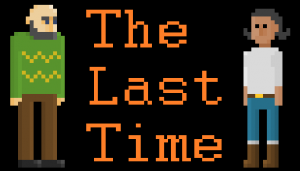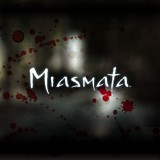Review for Ahnayro: The Dream World page 2
Indie developer Alice & Smith arrived on the scene in 2015 with their paranormal-themed alternate reality series The Black Watchmen. Their sophomore outing Ahnayro: The Dream World is a collaboration between the Montreal-based studio and “experimental theatre and game collective” The Lovent Group. While treading some of the same themes and mechanics as Black Watchmen, Ahnayro targets those who might be interested in a gaming experience focused more solidly on puzzles. Some alternate reality elements do come into play in order to flesh out the story, but these are noticeably lighter and more straightforward than in the game’s ARG-centric sibling. On the downside, this means the story elements overall suffer from a vagueness that dulls their effectiveness in capturing interest. Fortunately, given that the music, sound effects, and to a lesser extent the voice-overs all do a good job of supporting the highly-polished research-based puzzling, the narrative stumbles do not detract too much from the game’s ability to deliver a good time.
Ahnayro focuses on a patient of the fictional Oak Valley Sleep Center called The Dreamer, and her attempt to use lucid dreaming techniques to understand the strange entities who visit her in her sleep at night. While the plot is intentionally left open to interpretation, the general conceit is that the puzzles you are asked to solve are actually part of The Dreamer’s subconscious mind. By solving each of these puzzles, she comes one step closer to freeing herself from their nightmarish grip on her life. As she unlocks the meaning of her dreams, the “waking world” also begins to reveal its secrets and hidden connections, allowing players to reveal more backstory about The Dreamer through online websites related to the game.
Given Alice & Smith’s previous successes, I had high hopes for Ahnayro’s story. The dreamy, calming atmosphere is spot-on, and feels perfectly suited for an experience that is supposed to be set within a dream world. Some intriguing aspects of the tale hint at connections to the Black Watchmen universe, so players of those games will find some familiar elements in both. However, I was somewhat disappointed in how the story is executed here. While there is enough information given by the end to make some sense of the plot, the ARG-lite features such as dream diaries, treatment logs, and other elements that unlock as the game progresses tend to be so vague I found it difficult at times to understand their relevance to the larger story. Luckily, the narrative missteps have a limited impact on the overall success of the gameplay.
Players interact with the game through a clockwork mechanism called The Artifact, with nodes you click that lead to each multipart puzzle (called a Table). You are presented with a scene containing several objects, such as a pocket watch, cactus plant, and photograph. Each of these objects has a button beside it, which when clicked fades to reveal yet another set of buttons. When you click one of the secondary buttons, another scene containing several more objects appears, often with a short written phrase that acts as a further clue. The goal is to discover the answer that ties these objects together. This almost always requires an Alt-Tab away from the game (or a click of the globe icon at the top of the screen) to perform research online. For instance, the answer to one such set of objects might be “Watson,” of Sherlock Holmes fame.
Each Table is accompanied by a brief narration, revealing more of The Dreamer’s story and giving context for what follows. She also provides narration for individual puzzles, which typically details a dream or nightmare that she has experienced. Careful listening can sometimes reveal clues to the answer hidden within the content of these stream-of-consciousness narratives. Ahnayro’s dreamlike atmosphere is generally enhanced by the audio narration, but at times it is difficult to grasp the connection between the narration and the puzzle at hand. This is not helped by the fact that, although each scene in a Table can be solved in any order, a single dream’s narration is split between each Table’s set of puzzles, resulting in a hard-to-follow jumble of already surreal content.
Once you are reasonably certain of a puzzle answer, the keyword is input on a circular device known as a sigil. Using the mouse, you select the groups of letters that spell out the possible solution from the variety of options available around the sigil. The answer of Watson, for instance, might be spelled out from three groups of letters: “WA,” “TS,” and “ON.” As you select the letters, a line is drawn between them. If the correct combination is made, the sigil and two phrases related to the given answer appear in the button’s place, such as “The Adventures of Sherlock Holmes” and “George Newnes, Ltd.”
You’ll repeat this process with each of the puzzles until all have been solved. At this point, a sigil wheel appears and it is your job to find the connection between the three answers previously given. This involves the same research process used for solving each prior puzzle, then again selecting the answer on the sigil wheel. When the correct solution is input, you are taken back to the Table of objects, where the connection between all of an object’s puzzles appears next to the object, each of which relate to the entity tormenting The Dreamer. Once every object in a Table has been solved, a final narration from the related entity appears, further fleshing out the story, and a new Table opens up. There are three Tables overall, and a total of fifty puzzles to solve (according to the developers; I lost count of the exact number myself).
The game’s puzzle mechanics will be instantly familiar to anyone who has played The Black Watchmen. For the uninitiated, Ahnayro should be easy to pick up and play, despite the seeming complexity in describing it, mainly due to the fact that the multiple stages of gameplay all play similarly to one another. What’s impressive is that, much like The Black Watchmen, I never found myself bored by what could accurately, though deceptively, be described as repetitive gameplay, because the puzzles, and the real-world web-crawling required to solve them, are mentally engaging and touch on a variety of topics. I imagine that anyone, like me, who enjoys learning new things will be in fact-finding heaven here.
There is one particular moment when a timed sequence rears its head, requiring that you solve a series of puzzles before a countdown timer expires, but rather than ending the game, expiration of the countdown triggers a change in the puzzles and the answers needed to solve them. Although the timer is generous, and fits with the overall theme at that point in the game, I found it to be an unwelcome stressor in an otherwise calm (and calming) game environment. But since it only happens once, I do not consider this to be a particularly damning blemish.
As the puzzles contained in a Table are solved, you progressively unlock extra nodes on the Artifact, which can be selected to take you to websites in the real world. These sites, consisting mainly of The Dreamer’s diaries and treatment logs from the sleep clinic she has been admitted to, serve to fill in her backstory, giving details about her identity and the circumstances surrounding her ability to contact the mysterious entities that invade her dreams. Some of these nodes are locked behind cards featuring additional puzzles that must be solved, in some cases using information gleaned from previous sites. These puzzles, while optional, are very helpful in giving context and meaning to an otherwise obscure story, and I highly recommend not skipping them, especially since they are not usually more difficult than the main puzzles, and in some cases, in fact, are easier.
Intriguingly, Ahnayro features an experimental option to only play the game at night, via a toggle in the game’s settings. While this may seem bizarre at first glance, it actually made sense to me when I realized that it was simulating The Dreamer’s attempts to go to sleep at night, as though the game were actually taking place in her dreams. While I disabled this feature, for interested players it is nonetheless a clever addition that enhances the realism (or rather, surrealism) of the experience.
Players who are stuck on a puzzle can go online to the game’s forums (either directly or via in-game icon) to browse other players’ hints and tips, or to ask for help themselves. There is also a built-in hint system, accessible from another icon on the left side of the screen. The hint system, however, is limited to offering five hints total each night, resetting the next day.
Despite being a fairly straightforward puzzle game, this is a pretty hefty experience, especially considering its budget price. I spent around ten hours or so with the game, though depending on how quickly you solve the puzzles, your time could probably be shorter or longer by an hour or two.
Ahnayro’s graphics are fairly utilitarian by design, mixing digital objects and effects such as The Artifact with reproductions of real-world imagery such as photographs, paintings, and other items. Visual effects, such as glowing trails of light that appear when you solve a puzzle, add a bit of flair to the proceedings and keep things interesting. Websites related to the game are well designed and add a heavy dose of realism. In most games it isn’t particularly flattering to find that the graphics have a neutral effect on the overall experience, but in a game like Ahnayro, where the focus is on the puzzles and story, it is better for the artwork to be understated than to be distracting, and that’s exactly what happens here.
Sound effects are done well, whether it’s a button being clicked or a satisfying whoosh that accompanies solving a puzzle. The effects aren’t really sparse, but tend to be understated in a manner similar to the graphics. The overall impression they give is of being complementary to the overall experience, adding just that extra bit of punctuation to an action.
The voice-overs for The Dreamer and the various entities she encounters in her subconscious mind are largely a positive element, with the protagonist’s acting especially convincing as she wavers between sleepiness and anxiety. However, there are times when the execution feels a bit off, as though the actors were unsure how to deliver their lines. There are also some unexplained idiosyncrasies in the way the performers pronounce some words that can be distracting.
The game features a variety of music, and with one notable exception (during the timed sequence) consists mainly of downtempo orchestral and piano-based tracks. Overall, these are highly appropriate for maintaining the dreamlike atmosphere, though I found them somewhat repetitive when playing for long stretches of time. However, this did not significantly detract from my experience, and in any case the music can easily be disabled if it becomes an issue.
On the whole, Ahnayro: The Dream World is a very enjoyable puzzle game, and feels like a worthy addition to Alice & Smith’s stable of titles. The dreamlike atmosphere is very nicely developed, and the research-based puzzle mechanics that are the hallmark of The Black Watchmen series are used for the bulk of Ahnayro’s gameplay. However, this game breaks somewhat with its predecessors’ ARG-centric aspects to focus on the puzzles. The plot struggles to deliver a cohesive and intelligible narrative by being a bit too vague for its own good, but the web-based dream diaries and other documents that make up the ARG-lite features eventually provide enough information to suggest explanations for the patient’s predicament. The sound design capably supports the gameplay, though there are a few voice-over inconsistences and the music can begin to feel repetitive at times, mainly because there’s so much substance here to puzzle your way through. Ultimately, for gamers who want a high-quality, densely-packed puzzle gaming experience for a budget price, you can’t do much better than Ahnayro: The Dream World.





_capsule_fog__medium.png)























